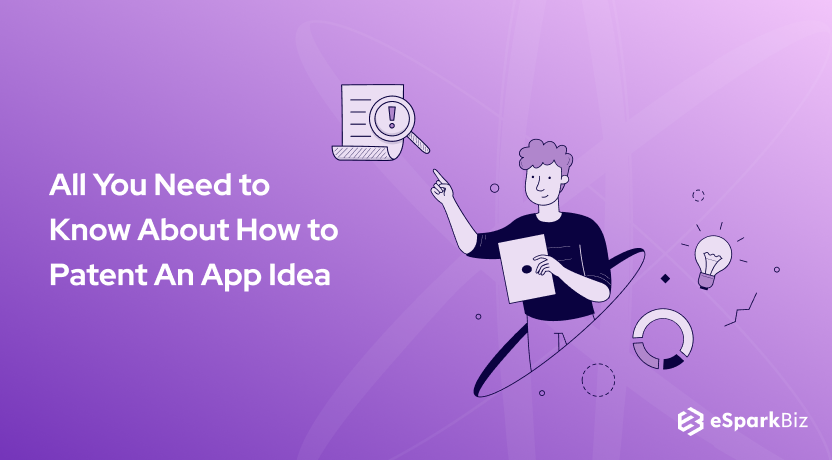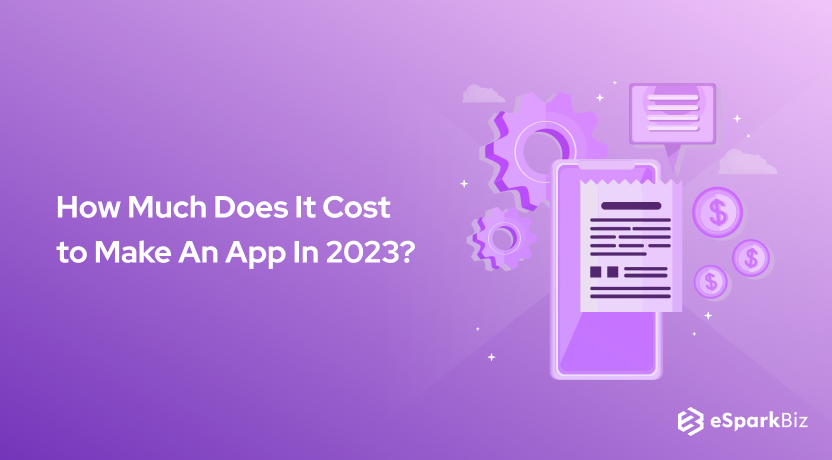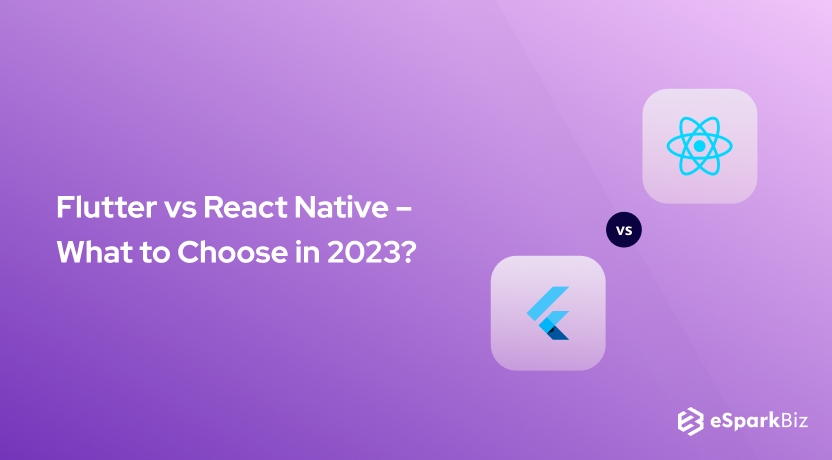In today’s techno-entrepreneurial world, original ideas tend to be precious, especially those concerning smartphone applications. Therefore, knowing How to Patent An App Idea is the safest method of safeguarding it and also demand redress for instances of misuse.
At any moment while you refine your app, market copycats may illegally procure and feed off your unique app idea, thus reducing your net app hits along with the profit you deserve.
Any premier mobile application development company can help you in this regard.
Fret not: intellectual property laws can shield your smartphone app idea against theft, sale, and illegal use.
Patenting a Smartphone App Idea: What Does it Mean?
A patent is nothing but a law pertaining to the intellectual property which
- Shields your app idea against non-consensual and/or illegal use,
- Deeming you the rightful owner of your app idea, it prohibits other people/organizations from selling/modifying it, and
- Ensures that nobody undermines/profits by falsely claiming credit for an innovative idea
A patent gives you a surety that your app idea can not be stolen by someone else. For the United States, the United States Patent and Trademark Office (USPTO) has the right to issue the patent.
Now, let me give you an example that will help you to understand why patent is important.
In the year 1994, there was a massive clash between Apple and Microsoft. Apple claimed that Microsoft has stolen their idea.
The idea was related to the GUI of Lisa and the Mac operating system. But, Apple didn’t acquire the patent for that
Therefore, Microsoft won that battle. If Apple had patented the idea, then things would have been different.
Why Is Patenting an App Idea Imperative?
Simply put, your idea regarding a smartphone app warrants protection in the context of being your sole intellectual property. Moreover, with an official patent, you are subsequently entitled to seek compensation from any party which transgresses existing patent laws.
Given below are the primary reasons behind the necessity of patents:
You have the power to legally indict any clone of your original app which is launched before or in tandem with the latter.
Avoid battling through vile lawsuits on infringement of laws, which can become mentally/economically too costly (if you have to fight powerful businesses eager to benefit off your genius). Your patent counts as binding legal proof of your idea’s originality and novelty.
Finally, your idea cannot be financially exploited by any cunning parties.
How Feasible Is a Patent for a Smartphone App Idea?
Of course, it is easy to achieve a patent for your mobile app idea! To do so, you must first be aware of what such an endeavor entails.
Note that you are not allowed to patent the specific smartphone app code, which is included in a nation’s copyright laws. In that case, How to Patent An App Idea successfully?
You can simply decide to patent your “method,” namely the operational procedures following which your smartphone app works in a specific manner.
Moreover, you are entitled to request a patent on the machines you utilize for app modification, the manufacturing materials, the development mechanisms.
Additionally, you may protect other facets of an original idea, e.g. icons, logos, and even names pertinent to your smartphone app, by requesting credit for them in your patent.
Three Important Prerequisites to Patent Mobile App Ideas
These three factors decide if a smartphone app idea will achieve a patent:
1) Invention
If you have spent blood and sweat to invent a “new” and unprecedented mobile app, the road to getting a patent is smooth.
As per the World Intellectual Property Organisation, to be patent-worthy your app must be special, inventing unexplored solutions to visible problems and thereby showcasing your brilliance.
2) Novelty and Uniqueness
Your invention is patent-worthy if your idea is new or “novel” and “non-obvious” or distinctive.
To clarify any confusion, your working idea must not be detected in a public platform prior to your patent application. Secondly, your app must be verified as non-obvious.
For example, even if you refine a Food Delivery App like Swiggy by streamlining the modes of a product purchase, the basic method still belongs to the parent enterprise.
Therefore, your refinement amounts to the cloning of procedures and remains ineligible for a patent.
3) Qualified and Useful
How will you convince officials that your patent is profitable as well as instrumental to human life on a large scale? Spend your time making your app ideas theoretically reliable.
Otherwise, there will be many Many App Usability Issues, and incorporating new features will be another challenge at your disposal.
If you seek credit over your work, you must first attempt to provide detailed and precise explanations regarding the operational procedures of your app!
Check If Your App Idea Already Patent Or Not?
Does a patent for a similar app idea already exist? You must check whether an apparently unique mobile app idea boasts a pre-existing patent by another party.
For this purpose, rigorous research is required on each related app idea that is either marketed or pending. Your country or state will possess a functional database where such information is stored and accessed.
For example, if you’re living in the United States, you should search for USPTO. That’s where you will be able to access the complete database. So, try to search in database where you app idea is available or not.
Furthermore, considering sifting through the WIPO’s IPC Catchword Index, which consists of data pertinent to various international patents. It will help you to know about How to Patent an Idea for an App.
What Is the Best Time to File a Patent?
After getting some idea of How To Patent An App, you will also have another question up your sleeve? What could be the best time to patent your idea?
Why are entrepreneurs/organisations quick to request provisional app patents in advance of presenting their features, techniques, and values in public realms?
Because the patenting rights of app ideas always belong to the first person/organisation that officially requests them, even though such a party has not originally conceptualized an idea.
Therefore, all legal advisors would suggest you patent your concept at the earliest. Public disclosures of your fully formed app can wait.
The Pocket Pinch of an App Patent
It is no surprise that the expenses related to smartphone app patents vary according to the category of a patent.
The price range of provisional patents lies between $2000-$5000. You can refine and put out your mobile app after availing a provisional patent, to gauge its success in the market. A provisional patent expires a year after it is granted.
Meanwhile, non-provisional patent prices lie anywhere between $11,000-$15,000. Thereafter, an administrative body verifies your patent application for a couple of years to gauge if it actually warrants a patent.
Types of Patent Application
As mentioned above, there are two categories to Patent App Idea. Their features are presented as follows.
1) Provisional Applications
These applications are more popular and frequently utilised among the two above patent categories.
The reason? Provisional applications enable you to demand a patent regardless of any formal claim to an idea, or related declarations and relevant statements regarding information disclosure.
They consist of the following features:
- Boast about your product as officially “patent pending”,
- Devote twelve months to critically refining and modifying your brainchild,
- Seek international patents by filing the necessary applications;
- Incur less expenses than non-provisional patents.
2) Non-provisional Applications
These applications are fundamentally different. You can file them without seeking priority or references related to work in your native country.
However, if you file such a patent you should support it with detailed specifications and demands: e.g. a thorough and delineated description of your novel work on paper, along with at least one claim that charts its parameters in a legal vein.
To gauge which patent is most suitable, you have to hire a reliable patent attorney. In addition, she/he can aid you in navigating the different application procedures.
Key Steps of App Patent Applications
1) For Filling A Provisional Patent
The process of seeking a filing date for your patent is easier thanks to such applications. Plus, provisional applications are cheaper and enable you to avoid the elaborate formalities of formal patent claims.
Nevertheless, such applications demand meticulous presentations of your idea: drawings, innovative charts, and other presentation techniques that will strengthen your patenting claims.
2) For Filing A Regular Patent
Following conventions, you require a regular patent prior to the termination of provisional patent application tenure. Its examiner judges if your work is peerless enough to warrant a proper patent.
Verification of regular patent applications generally takes between 1-3 years. It is constituted by the following aspects.
Specifications
In a nutshell, specifications of your app idea elaborate on the features that make your app unique in the market.
These elaborations must be clearly mentioned and also explain the most efficient procedures of the product’s mass production.
If you do not disclose such information, your rights for Patenting An App Idea could be taken away later.
The necessary app specifications are:
- Title
- Background
- Summary
- Description
Claims
This is a crucial and disputed aspect where you must be transparent about all the elements of your app over which you are applying for legal ownership.
Drawings
In case your app operates in a visual interface, you must insert related figures and visual explanations to elucidate the mechanisms of your application.
To aid your diagrams, attempt detailed checks of extant patents to apprehend your industry’s existing drawing standards.
Read also: How To Choose The Right Mobile App Database For An Application?
Bonus Tip: Other Ways to Protect Your App
As an app idea requires several checks before being considered patent-worthy, a crucial question arises: do other measures to safeguard your app idea exist? These alternative processes are given below.
Copyright: By securing app copyright, you can shield your application’s code and UI. Although they are more cost-effective, copyrights only work if another person replicates your app.
Non-Disclosure Agreement: You must mandate that every employee you hire agrees to a non-disclosure agreement (NDA). Basically, an NDA prohibits them from sharing app-related information with others; they will face lawsuits upon violating the same.
Non-Compete Agreement: By signing this agreement, you developers cannot work for a relevant competitor enterprise for a fixed time period after parting ways with your company.
Trademark: Trademarks safeguard the brand image elements of your app: logos, catalogues, ads, designs, and titles.
Records: For obvious reasons of clarity, minutely document your app-making procedures. Such documentation will come in handy in case you need infringement lawsuits.
Conclusion
In summary, mobile app ideas are personal and precious. No one likes to see their original ideas being credited to other people or businesses, an act which reeks of foul play and manipulation.
To avoid such circumstances, patent app ideas that take concrete shape in course of time. The simple yet crucial steps of How to Patent An App Idea as intellectual property has been outlined above. Happy patenting!
-
How Much Does It Cost To Patent An App?
There is no fixed cost associated with the patent of your mobile application. It varies from one application to the other.
However, the average cost of a provisional patent is $2,000-$5,000 and for a non-provisional patent, the cost lies somewhere between $10,000-$15,000. In addition to these, there is an approval and maintenance fee as well.
-
How To Protect Your App Idea?
There are multiple ways to protect your mobile app idea. Some of the most popular ones are as listed below:
Patenting An App
App Copyright
Non-Disclosure Agreement
Non-Compete Agreement
Trademark
Record -
Can Patent Attorney Steal Your Mobile App Idea?
There is a possibility of this scenario, without a pinch of doubt.! But, if you think practically, the chances of this happening are less, as a patent attorney won’t be interested in making a mobile application.
-
Can I Sell My App Idea To Google?
Yes, you can sell your app idea to tech giant Google and they will accept it, if the idea is extraordinary. However, for that purpose, you need to follow their guidelines. If you do that, then you will be qualified to sell the idea.








